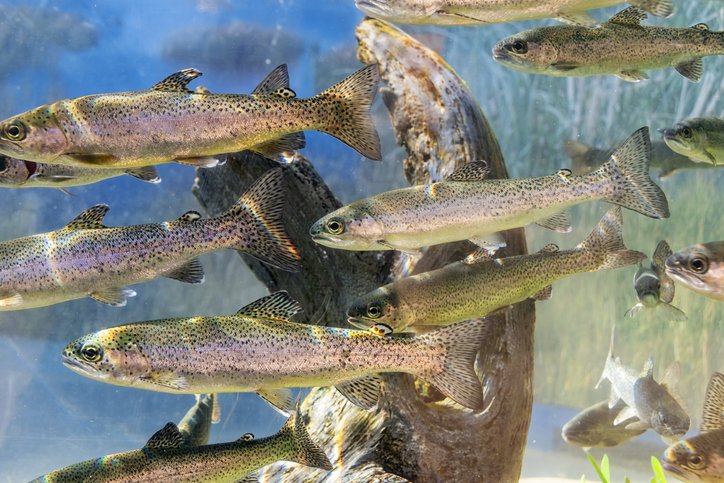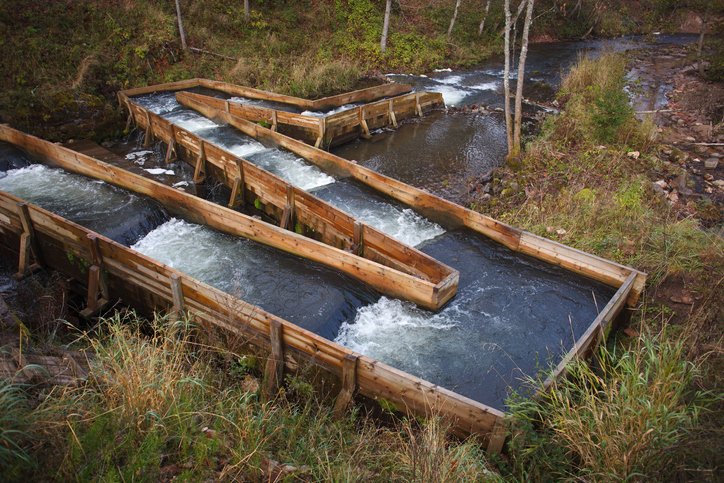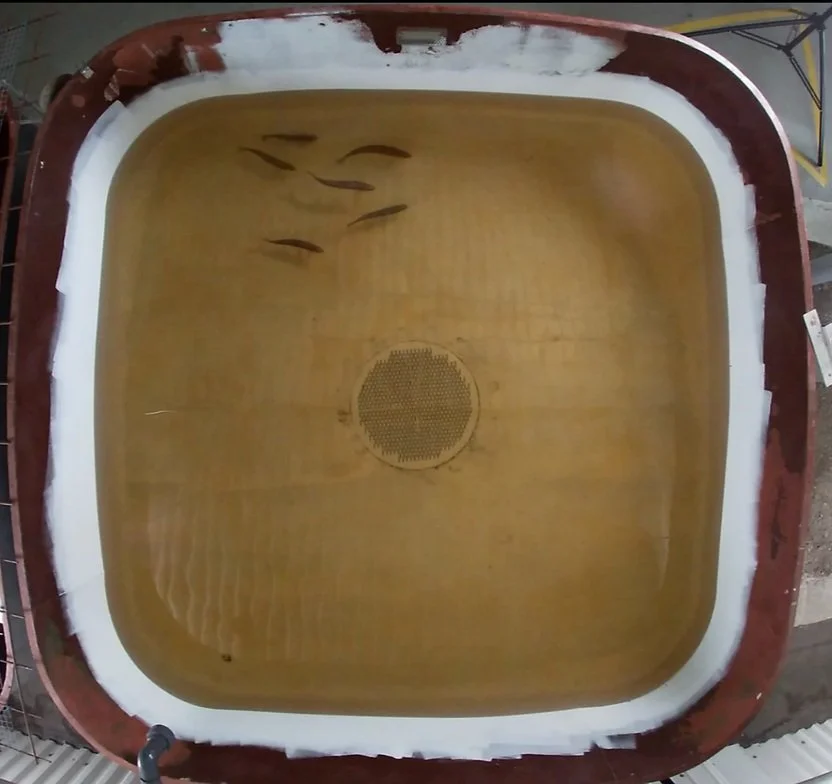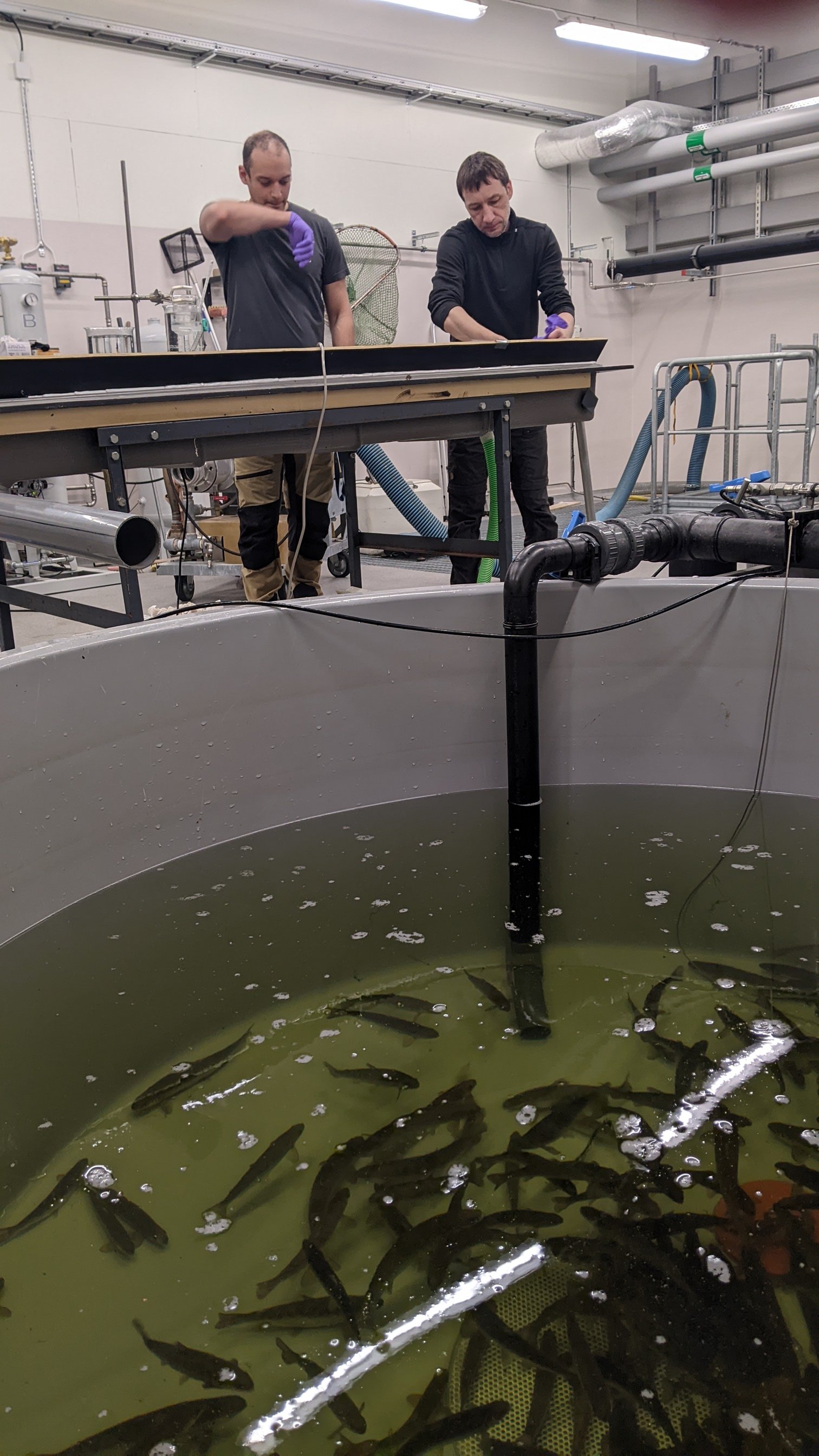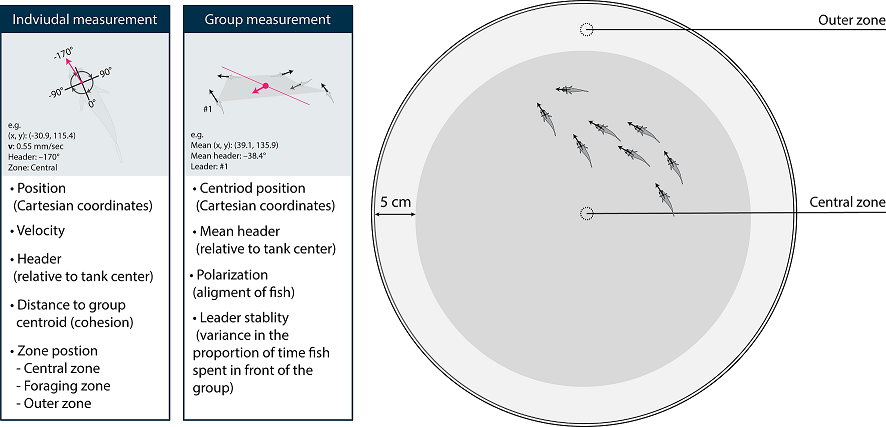Work package 2: How does exposure to pharmaceutical pollutants imapct animal groups?
Many animals form social groups and perform collective behaviours that are key to their survival (e.g. for avoiding predators, or finding food). Collective behaviours, like schooling in fish, involve the emergence of social interaction rules and consensus among members of the group. Pharmaceutical pollutants have the potential to disrupt these social processes by altering individual behaviour and within-group behavioural variability. Yet, no sudies to date have tested the potential impacts of pharmaceutical pollutants on animal collective behaviour. The objective of work package 2, is to identfy whether and how behavioural changes on individuals scale up to shape animal collective behaviour.
This project recieved some generous financial support from the Oscar and Lili Lamm Memorial foundation, which allowed me to commence this work package earlier than expected. In this study, I tested the effects of clobazam (a common antidepressant pollutant found in freshwaters around the world; also see work package 1) on the behaviour and schooling dynamics of Atlantic salmon (Salmo salar). The Atlantic salmon is one of Sweden’s most economically and ecologically valuable species and is also likely on of the most vulnerable to chemical pollution. This is because salmon populations are already on the verge of collapse in Sweden, primarily due to the construction of hydropower dams that block their migration pathways. The increasing presence of pharmceutical contaminants in waterways has the potential to exacertbate the problem by changing the schooling behaviour of migrating salmon. Because schooling is vital for salmon survival during their downstream migration to the sea and return migration for breeding, pharmaceutical pollution has the potential to change the migration success of salmon adding further risk to their conservation statuts
A school of Atlantic salmon smolt (i.e. juveniles)
Fish ladders are built to allow salmon to overcome dam walls on their migration route. However, pharmaceutical pollutants could effect the ability of salmon to use these ladders by impacting salmon schooling and social behaviour
Left: Salmon smolt schooling during the open-arena context assay. Right: My collaborators on the project, Dan and Aneesh, inserting the pharmaceutical implants into the salmon smolt
I conducted this study at the salmon hatchery and aquaculture facility in Norrfors, Sweden. Here, I had access to hundreds of hatchery-reared 2-year old salmon smolts, and an amazing experimental facility containing large housing tanks and 2x2 m schooling arenas. In this study, I exposed groups of six salmon to one of three clobazam exposure treatments: a control (0 ug/g, n = 8 groups), a low concentration of clobazam (25 ug/g, n = 8 groups) and a high concentration of clobazam (50 ug/g, n = 8 groups). These concentrations represent ecologically-relevant concentrations that have been detected in the wild. Exposure treatments were administered to smolts via insertion of slow-release internal implants. I also inserted a passive integrated transponder tag into each fish so that i identify each individual.
Following the exposure period, I tested the schooling performance of groups across two ecological contexts - in an open arena context, and in the presence of a predatory Northern pike (Esox lucius). I tested each group of salmon in each context 3 times (each repeat was at least 3 days apart). This approach allowed me to also estimate consistent among-individual and among-group variability within each context. All trials were video-recorded from above. Using automated tracking and computer vision, I will use these videos to quantify individual behaviours and group emergent outcomes. This will include group collective motion, collective decision-making, group coordination and group leadership dynamics
Collective behaviour assay design. Computer automation will be used to gather a detailed analysis on how pharmaceutical exposure impacts individual behaviours within groups (e.g. swimming speed, velocity), as well as collective outcomes (e.g. group cohesion), group social structure (e.g. leadership stability) and group decision-making (e.g. zone use)
